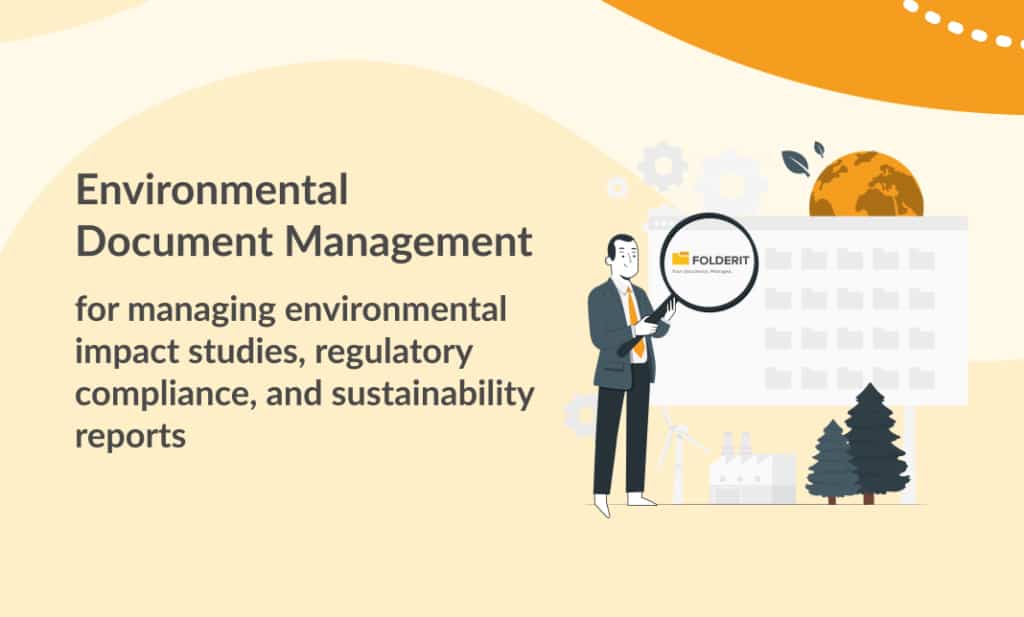Environmental document management is a crucial aspect of environmental management. It involves managing environmental impact studies, regulatory compliance, and sustainability reports to ensure that organizations and industries are operating in a manner that is sustainable, compliant, and environmentally responsible. In this article, we will explore the importance of environmental document management, its challenges, and how organizations can implement an effective environmental document management system.
The Importance of Environmental Document Management
Environmental document management is vital for many reasons. First, it helps organizations comply with regulatory requirements. Environmental regulations are becoming increasingly stringent, and organizations that do not comply face severe consequences, such as fines, penalties, and even legal action. Therefore, having an effective environmental document management system is essential to ensure that organizations comply with environmental regulations.
Second, environmental document management helps organizations to manage their environmental impact. Organizations have a responsibility to minimize their impact on the environment, and an effective document management system can help achieve this goal. For example, an organization can track its energy consumption, water usage, and waste generation through an environmental document management system. This information can be used to identify areas where the organization can reduce its environmental impact.
Third, environmental document management can help organizations achieve their sustainability goals. Many organizations have adopted sustainability goals, such as reducing their carbon footprint, using renewable energy, and minimizing waste. An environmental document management system can help organizations track their progress towards these goals and identify areas where they need to improve.
Challenges in Environmental Document Management
Despite the importance of environmental document management, there are several challenges that organizations face when implementing an effective system. One of the main challenges is the sheer volume of environmental documentation that organizations need to manage. Environmental impact studies, regulatory compliance documentation, and sustainability reports can be extensive and complex, making them difficult to manage.
Another challenge is ensuring that the environmental documentation is accurate and up-to-date. Environmental regulations are constantly evolving, and organizations need to ensure that their documentation reflects these changes. Failure to do so can lead to non-compliance and legal consequences.
Finally, another challenge is ensuring that the environmental documentation is accessible to the relevant stakeholders. Environmental documentation needs to be available to regulatory bodies, auditors, and other stakeholders who need to review it. Therefore, organizations need to ensure that their environmental document management system is secure, user-friendly, and accessible.
Implementing an Effective Environmental Document Management System
Despite the challenges, organizations can implement an effective environmental document management system by following these best practices:
- Conduct a needs assessment: Before implementing an environmental document management system, organizations should conduct a needs assessment to determine their requirements. This assessment should consider factors such as the volume of environmental documentation, the types of documentation, and the stakeholders who need access to the documentation.
- Choose the right technology: Once the needs assessment is complete, organizations should choose the right technology to manage their environmental documentation. The technology should be user-friendly, secure, and accessible to stakeholders who need to access the documentation. Cloud-based solutions are becoming increasingly popular, as they allow organizations to access their environmental documentation from anywhere.
- Create a centralized repository: Environmental documentation should be stored in a centralized repository, which allows stakeholders to access the documentation easily. The repository should be organized in a logical and structured manner, with appropriate metadata and tags to enable easy searching and retrieval of documents.
- Ensure accuracy and up-to-date documentation: Organizations need to ensure that their environmental documentation is accurate and up-to-date. This requires regular reviews and updates to reflect changes in environmental regulations or organizational practices.
- Train employees: Employees who are responsible for managing environmental documentation should receive appropriate training to ensure that they understand their roles and responsibilities. They should also be trained on how to use the environmental document management system effectively.
- Regularly audit the system: Organizations should regularly audit their environmental document management system to ensure that it is functioning
Folderit is an environmentally conscious document management system that understands the importance of environmental responsibility. By providing a secure, user-friendly, and accessible platform for managing environmental documentation, Folderit is committed to helping businesses manage their environmental impact and comply with regulations.
Start your free trial now or contact us.



